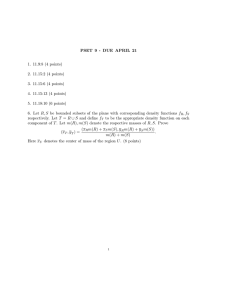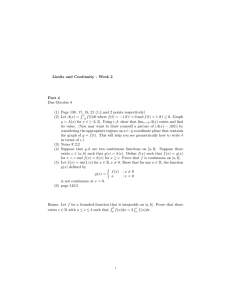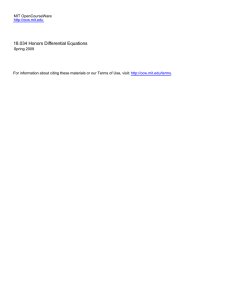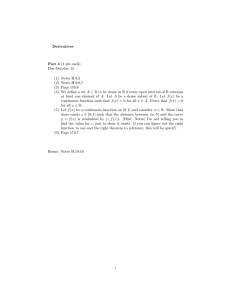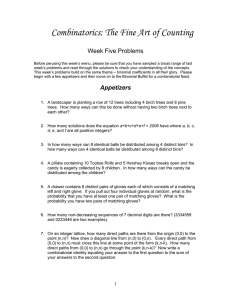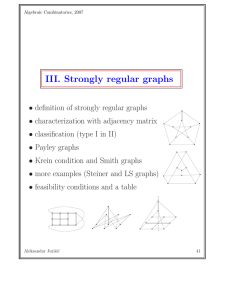Document 13570595
advertisement
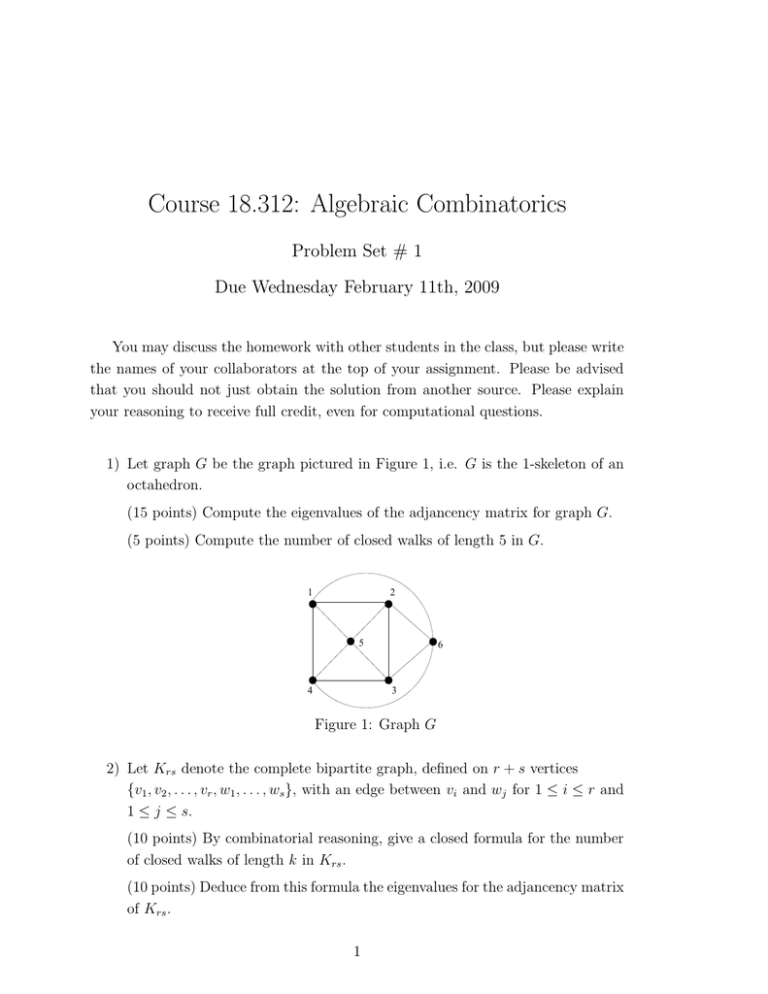
Course 18.312: Algebraic Combinatorics
Problem Set # 1
Due Wednesday February 11th, 2009
You may discuss the homework with other students in the class, but please write
the names of your collaborators at the top of your assignment. Please be advised
that you should not just obtain the solution from another source. Please explain
your reasoning to receive full credit, even for computational questions.
1) Let graph G be the graph pictured in Figure 1, i.e. G is the 1-skeleton of an
octahedron.
(15 points) Compute the eigenvalues of the adjancency matrix for graph G.
(5 points) Compute the number of closed walks of length 5 in G.
1
2
5
4
6
3
Figure 1: Graph G
2) Let Krs denote the complete bipartite graph, defined on r + s vertices
{v1 , v2 , . . . , vr , w1 , . . . , ws }, with an edge between vi and wj for 1 ≤ i ≤ r and
1 ≤ j ≤ s.
(10 points) By combinatorial reasoning, give a closed formula for the number
of closed walks of length k in Krs .
(10 points) Deduce from this formula the eigenvalues for the adjancency matrix
of Krs .
1
3) Recall that
of size k.
� �
n
k
, binomial coefficient, counts the number of subsets of {1, 2, . . . , n}
(10 points) Give an algebraic proof of the identity, i.e. use generating functions:
�
� �2
n
�
n
2n
=
n
k=0 k
�
.
(1)
(10 points) Give a combinatorial proof of identity (1).
4) Define a sequence of integers, {Ln }, by the initial conditions L0 = 2, L1 = 1,
and the recurrence Ln = Ln−1 + Ln−2 for n ≥ 2.
(10 points) Give a rational expression for the generating function
L(x) =
∞
�
Ln xn .
n=0
(10 points) Show that L(x) has the form
1
1
+
.
1 + λ1 x 1 + λ2 x
What are λ1 and λ2 ?
(5 points) Use this expression for L(x) to obtain a closed formula for Ln .
(15 points) Prove that the integer sequence {Ln } has the following combinato­
rial interpretation: Ln equals the number of subsets S of {a1 , a2 , . . . , an } such
that
1. ai , ai+1 are not both in S
2. a1 and an are not both in S.
Bonus) (10 points) Define a sequence of integers, {Pn } by the inital conditions P1 = 1,
P2 = 2, and the recurrence Pn = 2Pn−1 + Pn−2 for n ≥ 3.
To what real number does the sequence
�
(P1 + P2 )/P2 , (P2 + P3 )/P3 , (P3 + P4 )/P4 , . . .
converge?
�
MIT OpenCourseWare
http://ocw.mit.edu
18.312 Algebraic Combinatorics
Spring 2009
For information about citing these materials or our Terms of Use, visit: http://ocw.mit.edu/terms.

